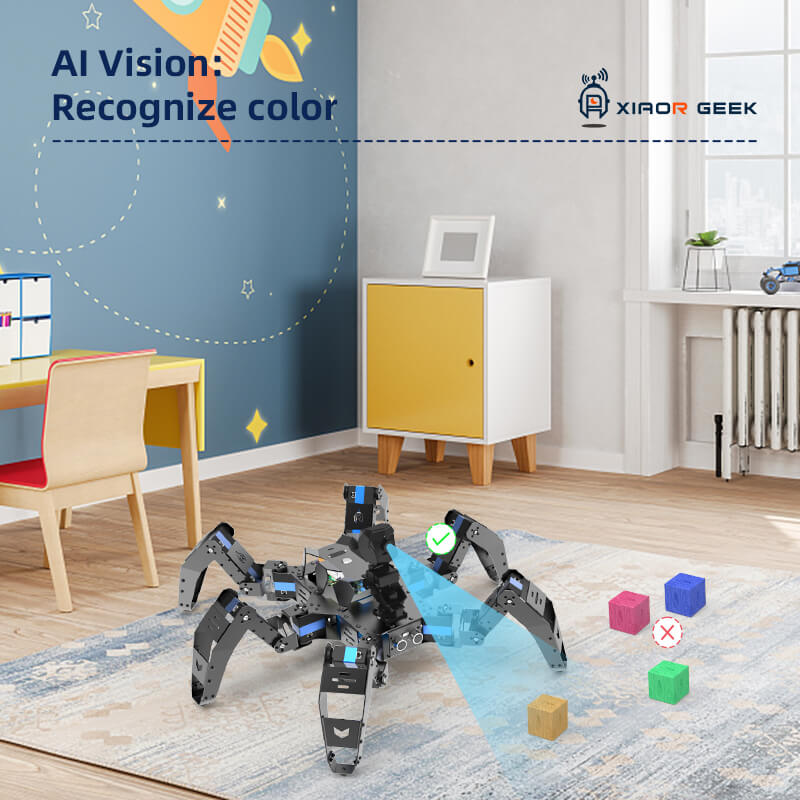Today, with the rapid advancement of science and technology, bionic intelligent robots are gradually becoming a dazzling star in the field of robotics with their unique bionic design, powerful programming functions and rich scalability. In the last article, we talked about the Jetson Nano bionic hexapod intelligent programmable robot. This article will focus on analyzing the performance of the Raspberry Pi core board and lead readers to have an in-depth understanding of the technical core of Raspberry Pi bionic hexapod intelligent programmable robot .
1. Understand the powerful performance of the Raspberry Pi core board
The Raspberry Pi core board is based on the ARM architecture and uses the Broadcom BCM2835 processor with a main frequency of up to 1GHz. Although it is only a small piece, it has powerful computing capabilities. At the same time, the core board is equipped with a high-speed SD card slot and USB interface to support large-capacity data storage and high-speed data transmission. These features allow the Raspberry Pi core board to easily handle various complex computing and data processing tasks.
2. Raspberry Pi core board and bionic hexapod robot motion mechanism
The powerful performance of the Raspberry Pi core board provides strong support for the realization of the bionic hexapod motion mechanism. Through the inverse kinematics algorithm, users can control each joint of the hexapod motion mechanism through the Raspberry Pi core board. The hexapod robot uses a total of 18 35KG metal gear servos, which greatly improves its service life and also improves Its stability enables complex environmental adaptation and motion control. At the same time, the core board also integrates a variety of sensor interfaces to facilitate users to access various sensors to achieve precise environmental perception and feedback control. For example, this Raspberry Pi six-legged bionic programmable intelligent robot integrates ultrasonic sensors, infrared Sensor, 720P HD camera, etc.
3. Raspberry Pi core board and artificial intelligence algorithm
The Raspberry Pi core board supports a variety of open source artificial intelligence frameworks, such as TensorFlow, Caffe, etc., to facilitate users to train and apply deep learning models. By combining with the Raspberry Pi core board, the Raspberry Pi bionic hexapod intelligent programmable robot can achieve highly intelligent environmental perception, visual line following, target recognition, color recognition, face recognition, QR code recognition, gesture recognition and other intelligent functions. .
4. Looking to the future: Raspberry Pi core board has unlimited potential
In the future, with the continuous advancement of technology, the performance of the Raspberry Pi core board will be further improved. We are expected to see smarter and more flexible bionic hexapod intelligent programmable robots. At the same time, with the continuous development of artificial intelligence technology, the Raspberry Pi core board will be more widely used in the field of robotics, bringing more convenience and innovation to human daily life.
To sum up, the powerful functions of the Raspberry Pi Bionic Hexapod Intelligent Programmable Robot are largely due to the excellent performance of its core board - the Raspberry Pi Core Board. From computing power to sensor interfaces, from environmental perception to the application of artificial intelligence algorithms, the Raspberry Pi core board has demonstrated excellent performance and huge potential. In the future, we have reason to believe that bionic six-legged intelligent programmable robots based on the Raspberry Pi core board will play an important role in more fields and become an important force in promoting technological progress and social development.

